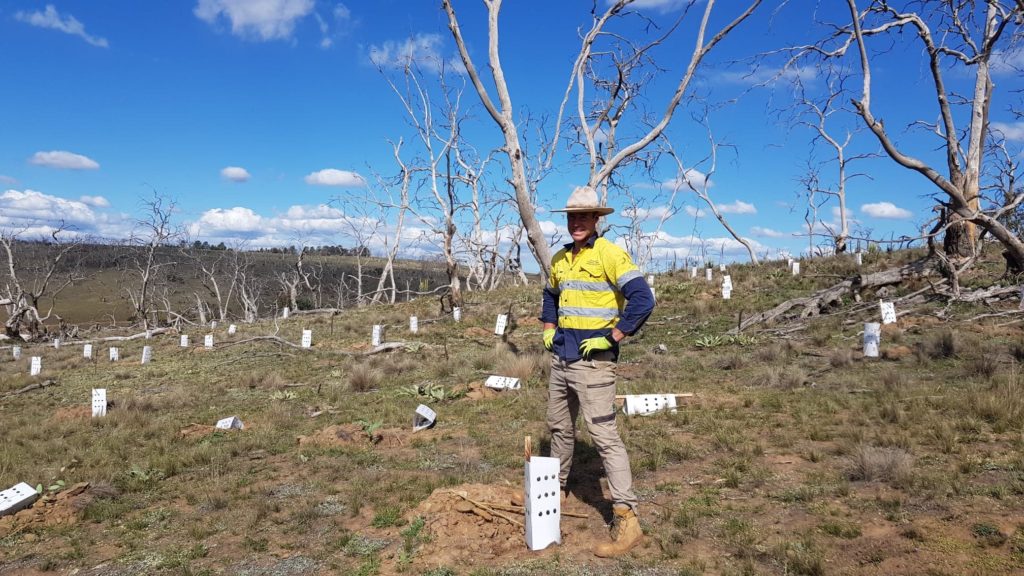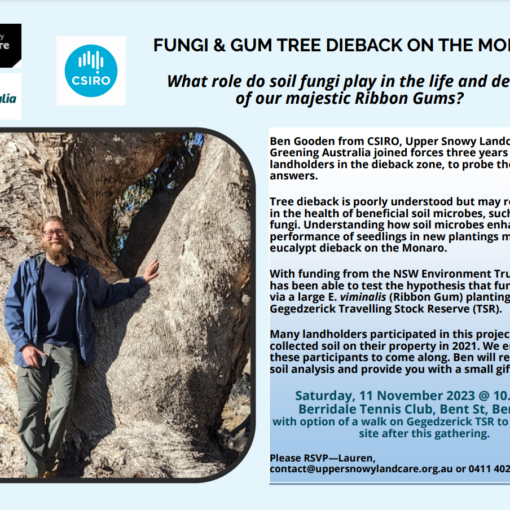In the last two weeks, under sunny blue skies, the Upper Snowy Landcare crew carefully spent the NSW Environmental Trust’s funds to purchase and plant thousands of seedlings to restore dieback-degraded landscapes on the Monaro. A number of fabulous volunteers joined in and the autumn weather was well-behaved. There was even some remaining moisture in the ground from the beautiful recent rains.
As you can see from the picture, we were working in a woodland completely wiped-out by dieback that has spread to about the size of the ACT. We trust these local provenance trees and shrubs will grow well and make up for some of the loss.
stran
As for the standing dead trees, we have just released a brochure called Life after Death to explain that many, often unseen, species require tree hollows to live and breed. Only old trees have hollows and these take around 100 years to form. Cutting down the dead trees for firewood or tidiness’ sake will destroy vital habitat for many birds and animals, both endangered and common. You will be familiar with the many parrots in the area that use holes to nest in, but in the table below you will see the full list of bats, birds, small mammals and reptiles from this area that are classified as vulnerable or endangered which rely on the dead trees for survival.
Furthermore, as the old tree decays and drops branches, it creates a nursery for the next generation of young trees to germinate and establish. These standing dead have yet to complete their final service to the land.
Vulnerable animals on the Monaro that use hollow-bearing and/or dead trees as lifecycle habitat.
| Common name | NSW status |
|---|---|
| Birds | |
| Gang-gang Cockatoo | Vulnerable |
| Glossy Black-Cockatoo | Vulnerable |
| Brown Treecreeper (eastern subspecies) | Vulnerable |
| Turquoise Parrot | Vulnerable |
| Barking Owl | Vulnerable |
| Powerful Owl | Vulnerable |
| Masked Owl | Vulnerable |
| White-bellied sea eagle | Vulnerable |
| Swift Parrot | Endangered |
| Marsupials | |
| Eastern Pygmy-possum | Vulnerable |
| Spotted-tailed Quoll | Vulnerable |
| Yellow-bellied Glider | Vulnerable |
| Squirrel Glider | Vulnerable |
| Bats | |
| Eastern Bentwing-bat | Vulnerable |
| Southern Myotis | Vulnerable |
| Eastern False Pipistrelle | Vulnerable |




